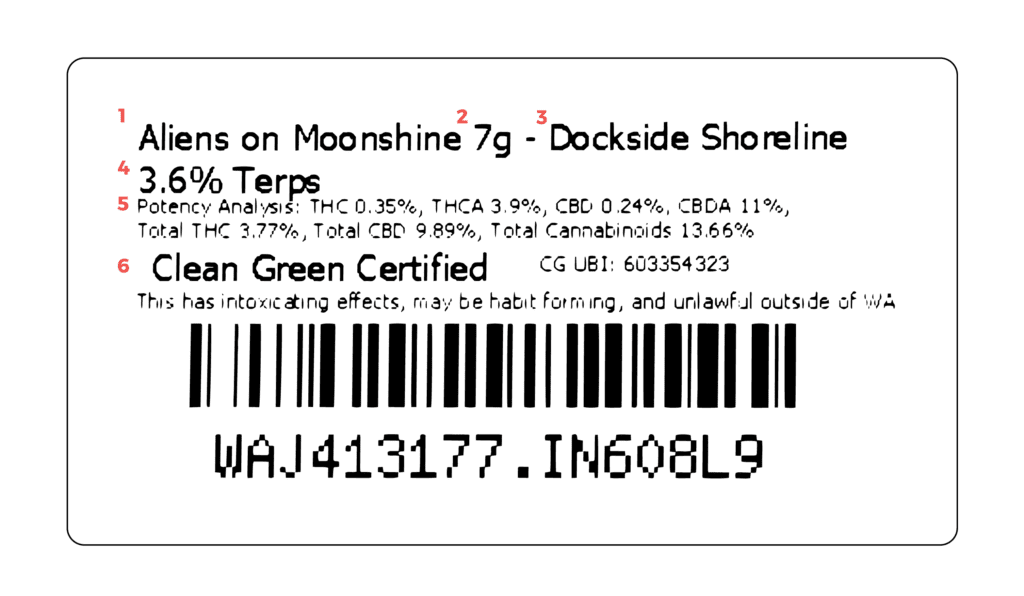If you told us twenty years ago that cannabis would come with labels, we would have asked you what you were smoking. But it’s 2019, and just like the FDA regulated nutrition facts labels you find at the grocery store, WA’s liquor control board (LCB) has specific labeling requirements for all retail cannabis. If you are new to cannabis or the cannabis retail environment, it can be a little daunting trying to break down all that information. There is no standard for how it’s all laid out, but once you are familiar with what everything means, it’s a little easier to find what you are looking for. To get you started, we’ve broken down the contents of one label below:
 9
9
1. Name of Cultivar (strain)
2. Package Size: Commonly available sizes are expressed by weight in grams: gram (1g), eighth (3.5g), quarter (7g), half ounce (14g), ounce (28g)
3. Place of Purchase: If you need to exchange a product, you are only able to return it to the location at which you purchased it.
4. Terpene Percentage (included on some but not all labels)
5. Potency Analysis of Cannabinoids (as percents of the dry weight of the flower provided to a lab after curing)
THC: currently activated THC | THCA: currently unactivated THC | Total THC: calculation for potential THC post-decarboxylation
CBD: currently activated CBD | CBDA: currently unactivated CBD | Total CBD: calculation for potential CBD post-decarboxylation
Total Cannabinoids = Total THC + Total CBD. Some producers also include other minor cannabinoids such as CBC, CBG, or CBN.
Taking this example, 3.77% Total THC (rounded up to 4%) + 9.89% Total CBD (rounded up to 10%). This means for every 4 parts THC, there are 10 parts CBD, which can be described as a 2:5 THC to CBD ratio.
Notice how the total THC is lower than the sum of the THC + THCA? This is due to the first law of thermodynamics, when heat is applied a small percent is lost in the conservation of energy. However, an educated consumer is not concerned with potency alone. Keep in mind that your experience with a particular cultivar is also influenced strongly by the concentration of various terpenes. Read 3 Things You Should Know About THC Percentages to learn more!
6. Pest Control Methods: In an effort to keep consumers safe, Washinton cannabis laws regulate the type of pest control that farmers are allowed to use in the growing process. At Dockside, we prefer to work with the companies who focus on raising their crops in the most pure and natural way possible. For more information about allowable pest control methods, click here.